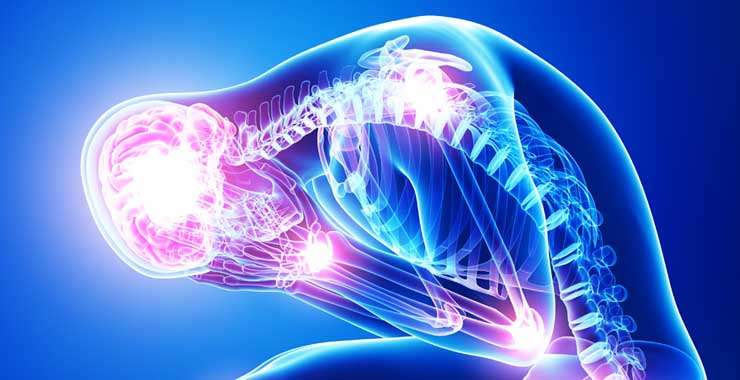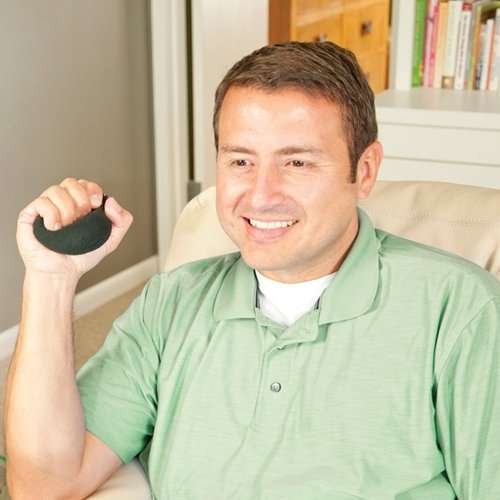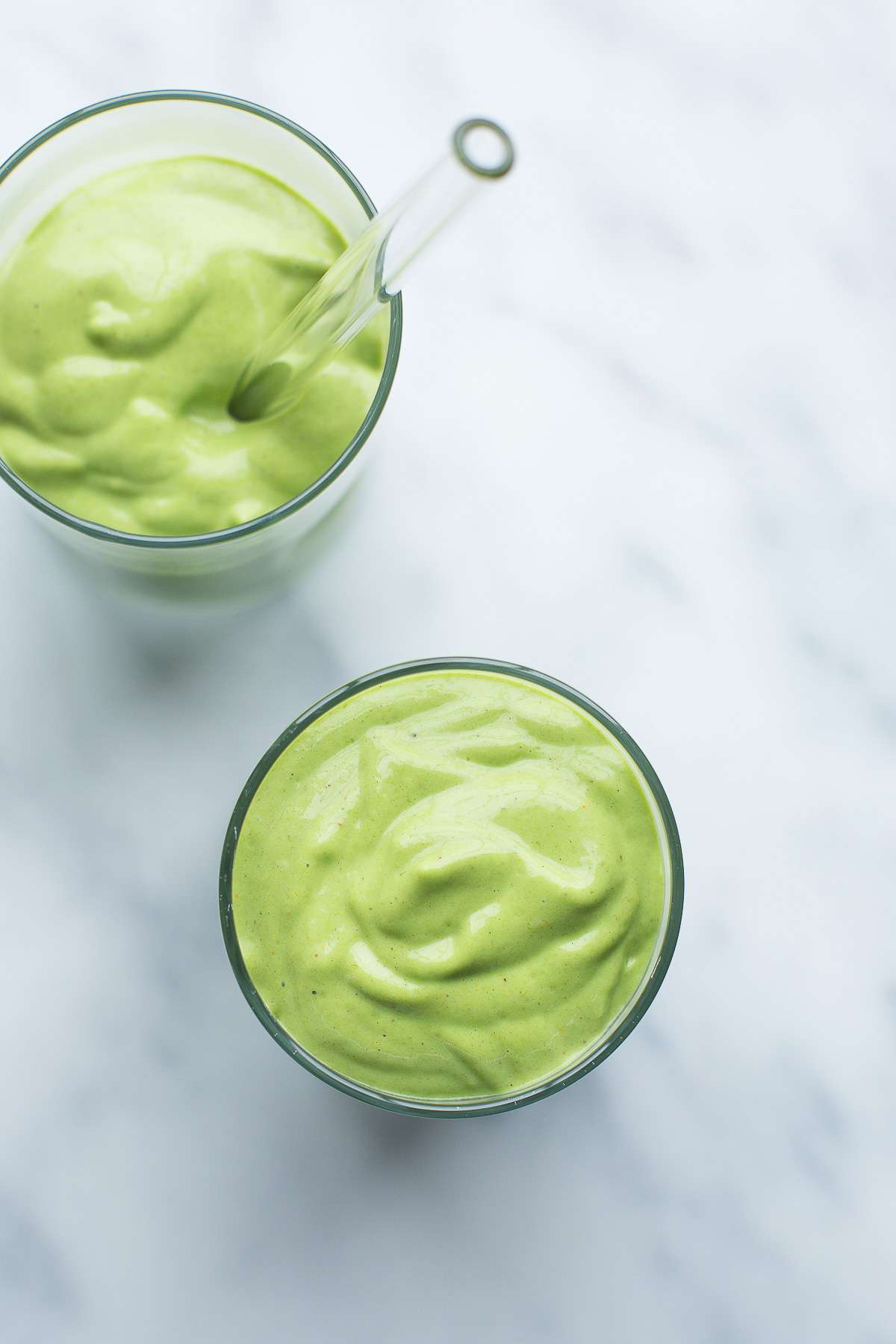What is Body Stress Release?
Body Stress Release (BSR) is a unique neuro-muscular releasing technique that influences the muscles surrounding the spine to relax and release for pain reduction and improved self-healing. Muscle testing is used to determine the direction of the stress and releasing is done gently so that the protective “Reflex” is not initiated.
Description of the Body Stress Release technique:
When the body is subjected to stress overload, instead of the stress being dissipated out of the system, it becomes “locked” into the body.
This “body stress” manifests as lines of tension at specific points, which may bring about postural distortions, pain, stiffness, or numbness. The impact on the nervous system disturbs the body’s lines of communication, thereby undermining efficiency of function.
At the first consultation the practitioner takes a client case history. While the client is lying down fully clothed, the sites of body stress are located by observing the body’s response to a series of pressure tests. With the information obtained the body stress is released by applying light but definite pressure at precise points in specific directions.
The process takes between 25 and 35 minutes. Generally three to five consultations are carried out, which may be sufficient in those cases where the body stress is mild or has been present for a relatively short period. In the case of severe or long-standing body stress, a further consultation is necessary within a week, followed by further sessions, with the number and frequency depending on the body’s response. Thereafter clients are advised to be assessed for body stress three to four times a year for health maintenance.
- As Body Stress Release is a gentle approach, it is safe and suitable for people of all ages, from new-born babies to the aged, in all states of health.
- Body Stress Release is a distinct health care profession and does not resemble other modalities. It does not involve massage, manipulation, machines, or medication.
- Body Stress Release is a complementary technique that assists the body in its’ own healing process and brings effective relief against all forms of tension, pain and discomfort.
IMPORTANT NOTE: Body Stress Release is not a diagnosis or treatment of any condition or disease. It is concerned only with locating and releasing stored tension, so that the body is assisted in its’ innate ability to maintain and heal itself.
Chronic stress puts your health at risk
Chronic stress can wreak havoc on your mind and body. Take steps to control your stress.
By Mayo Clinic Staff
Your body is hard-wired to react to stress in ways meant to protect you against threats from predators and other aggressors. Such threats are rare today, but that doesn’t mean that life is free of stress.
On the contrary, you likely face many demands each day, such as taking on a huge workload, paying the bills and taking care of your family. Your body treats these so-called minor hassles as threats. As a result, you may feel as if you’re constantly under attack. But you can fight back. You don’t have to let stress control your life.
Understanding the natural stress response
When you encounter a perceived threat — such as a large dog barking at you during your morning walk — your hypothalamus, a tiny region at your brain’s base, sets off an alarm system in your body. Through a combination of nerve and hormonal signals, this system prompts your adrenal glands, located atop your kidneys, to release a surge of hormones, including adrenaline and cortisol.
Adrenaline increases your heart rate, elevates your blood pressure and boosts energy supplies. Cortisol, the primary stress hormone, increases sugars (glucose) in the bloodstream, enhances your brain’s use of glucose and increases the availability of substances that repair tissues.
Cortisol also curbs functions that would be nonessential or harmful in a fight-or-flight situation. It alters immune system responses and suppresses the digestive system, the reproductive system and growth processes. This complex natural alarm system also communicates with the brain regions that control mood, motivation and fear.
When the natural stress response goes wild
The body’s stress response system is usually self-limiting. Once a perceived threat has passed, hormone levels return to normal. As adrenaline and cortisol levels drop, your heart rate and blood pressure return to baseline levels, and other systems resume their regular activities.
But when stressors are always present and you constantly feel under attack, that fight-or-flight reaction stays turned on.
The long-term activation of the stress response system and the overexposure to cortisol and other stress hormones that follows can disrupt almost all your body’s processes. This puts you at increased risk of many health problems, including:
- Anxiety
- Depression
- Digestive problems
- Headaches
- Muscle tension and pain
- Heart disease, heart attack, high blood pressure and stroke
- Sleep problems
- Weight gain
- Memory and concentration impairment
That’s why it’s so important to learn healthy ways to cope with your life stressors.
Why you react to life stressors the way you do
Your reaction to a potentially stressful event is different from anyone else’s. How you react to your life stressors is affected by such factors as:
- Genetics. The genes that control the stress response keep most people on a fairly steady emotional level, only occasionally priming the body for fight or flight. Overactive or underactive stress responses may stem from slight differences in these genes.
- Life experiences. Strong stress reactions sometimes can be traced to traumatic events. People who were neglected or abused as children tend to be particularly vulnerable to stress. The same is true of airplane crash survivors, military personnel, police officers and firefighters, and people who have experienced violent crime.
You may have some friends who seem relaxed about almost everything and others who react strongly to the slightest stress. Most people react to life stressors somewhere between those extremes.
Learning to react to stress in a healthy way
Stressful events are facts of life. And you may not be able to change your current situation. But you can take steps to manage the impact these events have on you.
You can learn to identify what causes you stress and how to take care of yourself physically and emotionally in the face of stressful situations.
Stress management strategies include:
- Eating a healthy diet, getting regular exercise and getting plenty of sleep
- Practicing relaxation techniques such as yoga, deep breathing, massage or meditation
- Keeping a journal and writing about your thoughts or what you’re grateful for in your life
- Taking time for hobbies, such as reading, listening to music, or watching your favorite show or movie
- Fostering healthy friendships and talking with friends and family
- Having a sense of humor and finding ways to include humor and laughter in your life, such as watching funny movies or looking at joke websites
- Volunteering in your community
- Organizing and prioritizing what you need to accomplish at home and work and removing tasks that aren’t necessary
- Seeking professional counseling, which can help you develop specific coping strategies to manage stress
Avoid unhealthy ways of managing your stress, such as using alcohol, tobacco, drugs or excess food. If you’re concerned that your use of these products has increased or changed due to stress, talk to your doctor.
The rewards for learning to manage stress can include peace of mind, less stress and anxiety, a better quality of life, improvement in conditions such as high blood pressure, better self-control and focus, and better relationships. And it might even lead to a longer, healthier life.
There is a problem with information submitted for this request. Review/update the information highlighted below and resubmit the form.
From Mayo Clinic to your inbox
Sign up for free, and stay up to date on research advancements, health tips and current health topics, like COVID-19, plus expertise on managing health.
ErrorEmail field is required
ErrorInclude a valid email address
To provide you with the most relevant and helpful information, and understand which information is beneficial, we may combine your email and website usage information with other information we have about you. If you are a Mayo Clinic patient, this could include protected health information. If we combine this information with your protected health information, we will treat all of that information as protected health information and will only use or disclose that information as set forth in our notice of privacy practices. You may opt-out of email communications at any time by clicking on the unsubscribe link in the e-mail.
Thank you for subscribing!
You’ll soon start receiving the latest Mayo Clinic health information you requested in your inbox.
Sorry something went wrong with your subscription
Please, try again in a couple of minutes
- How stress affects your health. American Psychological Association. https://www.apa.org/topics/stress/health. Accessed March 19, 2021.
- Stress effects on the body. American Psychological Association. https://www.apa.org/topics/stress/body. Accessed March 19, 2021.
- Lower stress: How does stress affect the body? American Heart Association. https://www.heart.org/en/healthy-living/healthy-lifestyle/stress-management/lower-stress-how-does-stress-affect-the-body. Accessed March 18, 2021.
- Stress and your health. U.S. Department of Health & Human Services. https://www.womenshealth.gov/mental-health/good-mental-health/stress-and-your-health. Accessed March 18, 2021.
- AskMayoExpert. Stress management and resiliency (adult). Mayo Clinic. 2019.
- Seaward BL. Essentials of Managing Stress. 5th ed. Jones & Bartlett Learning; 2021.
- Seaward BL. Managing Stress: Skills for Self-Care, Personal Resiliency and Work-Life Balance in a Rapidly Changing World. 10th ed. Jones & Bartlett Learning; 2022.
- Olpin M, et al. Stress Management for Life. 5th ed. Cengage Learning; 2020.
- Hall-Flavin DK (expert opinion). Mayo Clinic. March 23, 2021.
See more In-depth
Exercise and stress: Get moving to manage stress
Exercise in almost any form can act as a stress reliever. Being active can boost your feel-good endorphins and distract you from daily worries.
By Mayo Clinic Staff
You know that exercise does your body good, but you’re too busy and stressed to fit it into your routine. Hold on a second — there’s good news when it comes to exercise and stress.
Virtually any form of exercise, from aerobics to yoga, can act as a stress reliever. If you’re not an athlete or even if you’re out of shape, you can still make a little exercise go a long way toward stress management. Discover the connection between exercise and stress relief — and why exercise should be part of your stress management plan.
Exercise and stress relief
Exercise increases your overall health and your sense of well-being, which puts more pep in your step every day. But exercise also has some direct stress-busting benefits.
- It pumps up your endorphins. Physical activity may help bump up the production of your brain’s feel-good neurotransmitters, called endorphins. Although this function is often referred to as a runner’s high, any aerobic activity, such as a rousing game of tennis or a nature hike, can contribute to this same feeling.
- It reduces negative effects of stress. Exercise can provide stress relief for your body while imitating effects of stress, such as the flight or fight response, and helping your body and its systems practice working together through those effects. This can also lead to positive effects in your body — including your cardiovascular, digestive and immune systems — by helping protect your body from harmful effects of stress.
-
It’s meditation in motion. After a fast-paced game of racquetball, a long walk or run, or several laps in the pool, you may often find that you’ve forgotten the day’s irritations and concentrated only on your body’s movements.
As you begin to regularly shed your daily tensions through movement and physical activity, you may find that this focus on a single task, and the resulting energy and optimism, can help you stay calm, clear and focused in everything you do.
- It improves your mood. Regular exercise can increase self-confidence, improve your mood, help you relax, and lower symptoms of mild depression and anxiety. Exercise can also improve your sleep, which is often disrupted by stress, depression and anxiety. All of these exercise benefits can ease your stress levels and give you a sense of command over your body and your life.
Put exercise and stress relief to work for you
A successful exercise program begins with a few simple steps.
- Consult with your doctor. If you haven’t exercised for some time or you have health concerns, you may want to talk to your doctor before starting a new exercise routine.
-
Walk before you run. Build up your fitness level gradually. Excitement about a new program can lead to overdoing it and possibly even injury.
For most healthy adults, the Department of Health and Human Services recommends getting at least 150 minutes of moderate aerobic activity or 75 minutes of vigorous aerobic activity a week, or a combination of moderate and vigorous activity. Examples of moderate aerobic activity include brisk walking or swimming, and vigorous aerobic activity can include running or biking. Greater amounts of exercise will provide even greater health benefits.
Also, aim to do strength training exercises for all major muscle groups at least two times a week.
-
Do what you love. Almost any form of exercise or movement can increase your fitness level while decreasing your stress. The most important thing is to pick an activity that you enjoy. Examples include walking, stair climbing, jogging, dancing, bicycling, yoga, tai chi, gardening, weightlifting and swimming.
And remember, you don’t need to join a gym to get moving. Take a walk with the dog, try body-weight exercises or do a yoga video at home.
- Pencil it in. In your schedule, you may need to do a morning workout one day and an evening activity the next. But carving out some time to move every day helps you make your exercise program an ongoing priority. Aim to include exercise in your schedule throughout your week.
Stick with it
Starting an exercise program is just the first step. Here are some tips for sticking with a new routine or refreshing a tired workout:
-
Set SMART goals. Write down SMART goals — specific, measurable, attainable, relevant and time-limited goals.
If your primary goal is to reduce stress in your life, your specific goals might include committing to walking during your lunch hour three times a week. Or try online fitness videos at home. Or, if needed, find a babysitter to watch your children so that you can slip away to attend a cycling class.
- Find a friend. Knowing that someone is waiting for you to show up at the gym or the park can be a powerful incentive. Try making plans to meet friends for walks or workouts. Working out with a friend, co-worker or family member often brings a new level of motivation and commitment to your workouts. And friends can make exercising more fun!
- Change up your routine. If you’ve always been a competitive runner, take a look at other, less competitive options that may help with stress reduction, such as Pilates or yoga classes. As an added bonus, these kinder, gentler workouts may enhance your running while also decreasing your stress.
-
Exercise in short bursts. Even brief bouts of physical activity offer benefits. For instance, if you can’t fit in one 30-minute walk, try a few 10-minute walks instead. Being active throughout the day can add up to provide health benefits. Take a mid-morning or afternoon break to move and stretch, go for a walk, or do some squats or pushups.
Interval training, which entails brief (60 to 90 seconds) bursts of intense activity at almost full effort, can be a safe, effective and efficient way of gaining many of the benefits of longer duration exercise. What’s most important is making regular physical activity part of your lifestyle.
Whatever you do, don’t think of exercise as just one more thing on your to-do list. Find an activity you enjoy — whether it’s an active tennis match or a meditative meander down to a local park and back — and make it part of your regular routine. Any form of physical activity can help you unwind and become an important part of your approach to easing stress.
There is a problem with information submitted for this request. Review/update the information highlighted below and resubmit the form.
From Mayo Clinic to your inbox
Sign up for free, and stay up to date on research advancements, health tips and current health topics, like COVID-19, plus expertise on managing health.
ErrorEmail field is required
ErrorInclude a valid email address
To provide you with the most relevant and helpful information, and understand which information is beneficial, we may combine your email and website usage information with other information we have about you. If you are a Mayo Clinic patient, this could include protected health information. If we combine this information with your protected health information, we will treat all of that information as protected health information and will only use or disclose that information as set forth in our notice of privacy practices. You may opt-out of email communications at any time by clicking on the unsubscribe link in the e-mail.
Thank you for subscribing!
You’ll soon start receiving the latest Mayo Clinic health information you requested in your inbox.
Sorry something went wrong with your subscription
Please, try again in a couple of minutes
- Physical Activity Guidelines for Americans. 2nd ed. U.S. Department of Health and Human Services. https://health.gov/our-work/physical-activity/current-guidelines. Accessed Aug. 10, 2020.
- AskMayoExpert. Physical activity (adult). Mayo Clinic; 2020.
- Working out boosts brain health. American Psychological Association. https://www.apa.org/topics/exercise-stress. Accessed Aug. 10, 2020.
- Seaward BL. Physical exercise: Flushing out the stress hormones. In: Essentials of Managing Stress. 4th ed. Jones & Bartlett Publishers; 2017.
- Bodenheimer T, et al. Goal-setting for behavior change in primary care: An exploration and status report. Patient Education and Counseling. 2009; doi:10.1016/j.pec.2009.06.001.
- Locke E, et al. Building a practically useful theory of goal setting and task motivation: A 35-year odyssey. American Psychologist. 2002; doi:10.1037//0003-066x.57.9.705.
- Olpin M, et al. Healthy lifestyles. In: Stress Management for Life. 4th ed. Cengage Learning; 2016.
- Laskwoski ER (expert opinion). Mayo Clinic. Aug. 12, 2020.
See more In-depth




